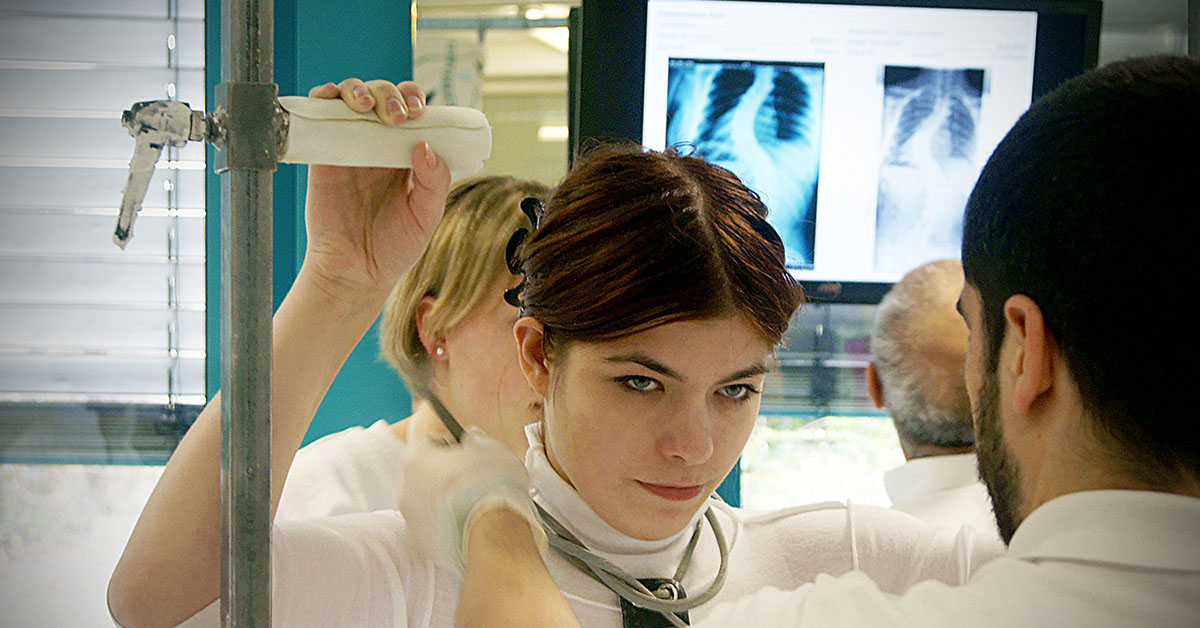
Overview of treatment:
Surgeons usually use one of two ways to approach the spine: from the anterior, or front, or from the posterior, or back. Surgeons use the anterior approach when the operation is performed through the chest wall. In the posterior approach, the spine is reached through the patient's back.
Anterior and Posterior Scoliosis Surgery uses both methods. First, an anterior approach is used to allow correction of problems, and then a posterior approach is used for better fusion.
Who needs this treatment?
Anterior and Posterior Scoliosis Surgery is recommended when:
- There is extremely large curve or deformity
- There is evidence that the curve is progressing and an abnormal curve is expected in the future
- Previous attempts at fusion have failed
- Non-surgical or non-operative treatments have failed
What are the steps in Anterior and Posterior Scoliosis Surgery?
The Anesthesia
First, the patients are given an anesthesia to put them to sleep. A breathing tube is then placed to assist the patients with breathing during the procedure. Different catheters are put in veins to monitor the blood pressure, fluid level, heart function and depth of the anesthesia during the operation.
Anterior approach
The surgeon will first approach the spine from the side of the chest. In order to do this, an incision is made in the chest wall, the lungs are deflated, and a rib is removed to reach the spine. The disc material is removed from between the vertebrae to make the curve more flexible and to facilitate fusion. The removed rib is then used as a bone graft. The anterior procedure is completed, and the wound is closed.
Posterior approach
The patients are then positioned for posterior surgery. The spine is exposed from behind by stripping the back muscles to the sides. Then the spinal instrumentation is put in place to correct the deformity. Metal rods are inserted alongside the spine and affixed to the vertebrae by hooks, screws, or wires. The fusion will make the spine rigid and resistant to deformity or curvature.
Final tightening and Incision closure
Once the spinal instrumentation is in place, a final tightening is done. The incision is then closed and dressed.
What happens after the surgery?
The patients usually have to stay in the Intensive Care Unit, or ICU, for one to two days. Most patients are discharged from the hospital after 7 to 10 days of the surgery. The first few days after the surgery are extremely painful, so patients are given strong painkillers, which may cause nausea and drowsiness.
Patients have to perform coughing and breathing exercises to get rid of congestion in the lungs. The patients are usually able to sit up the day after surgery and may be able to walk within a week. Patients may have trouble with activities involving arms and hands in the initial days after the procedure.
What are the potential complications and risk factors?
Following are some of the complications and risk factors that may occur after this surgery:
- Non-union - The fusion may fail and false joints may develop at the site.
- Bleeding - There is a risk of major blood loss during the surgery.
- Infection - All surgeries involve a risk of infection.
- Damage to nerves - There is a risk of damage to nerves, although it is a low risk.
- Lung function - Some serious lung problems may occur after the surgery.
